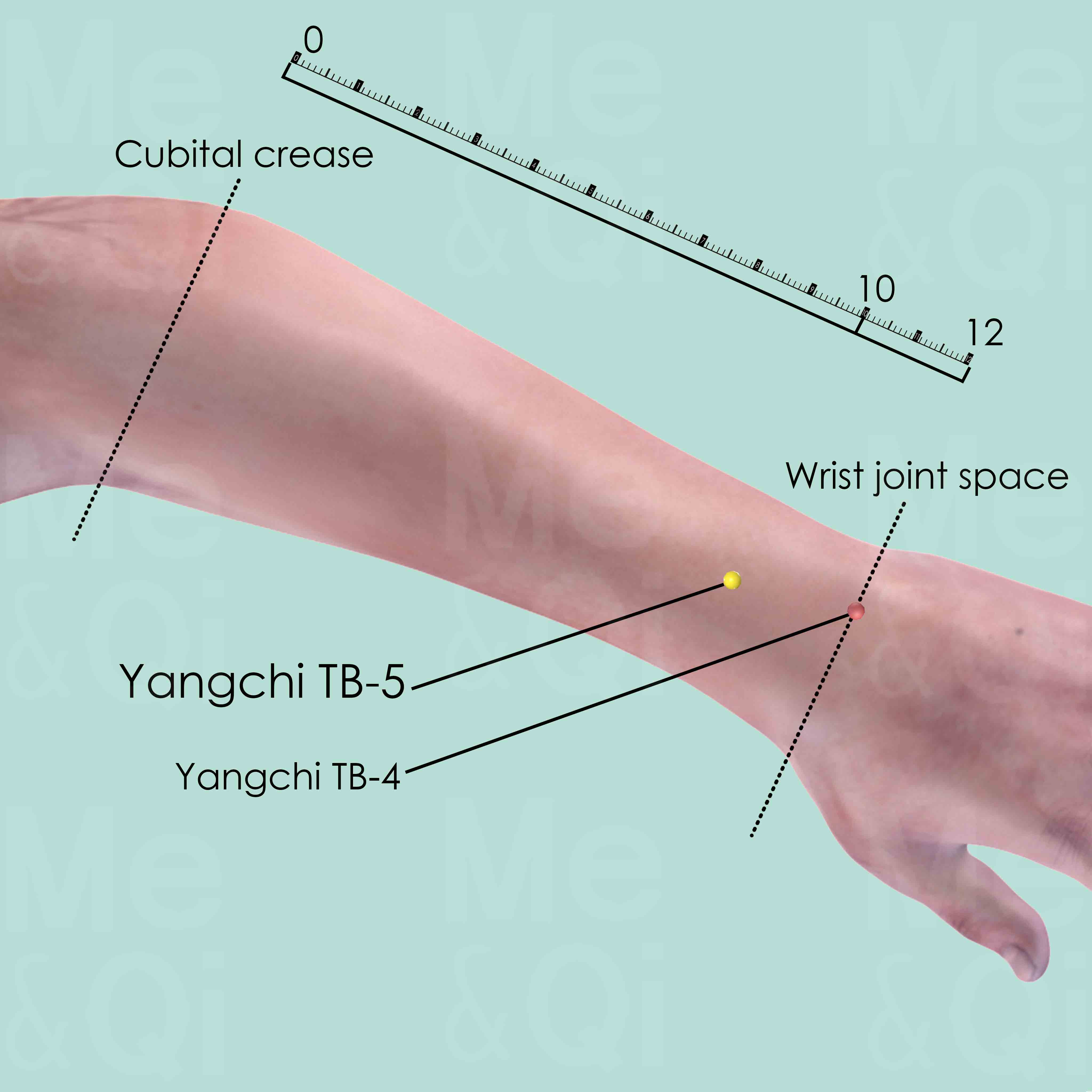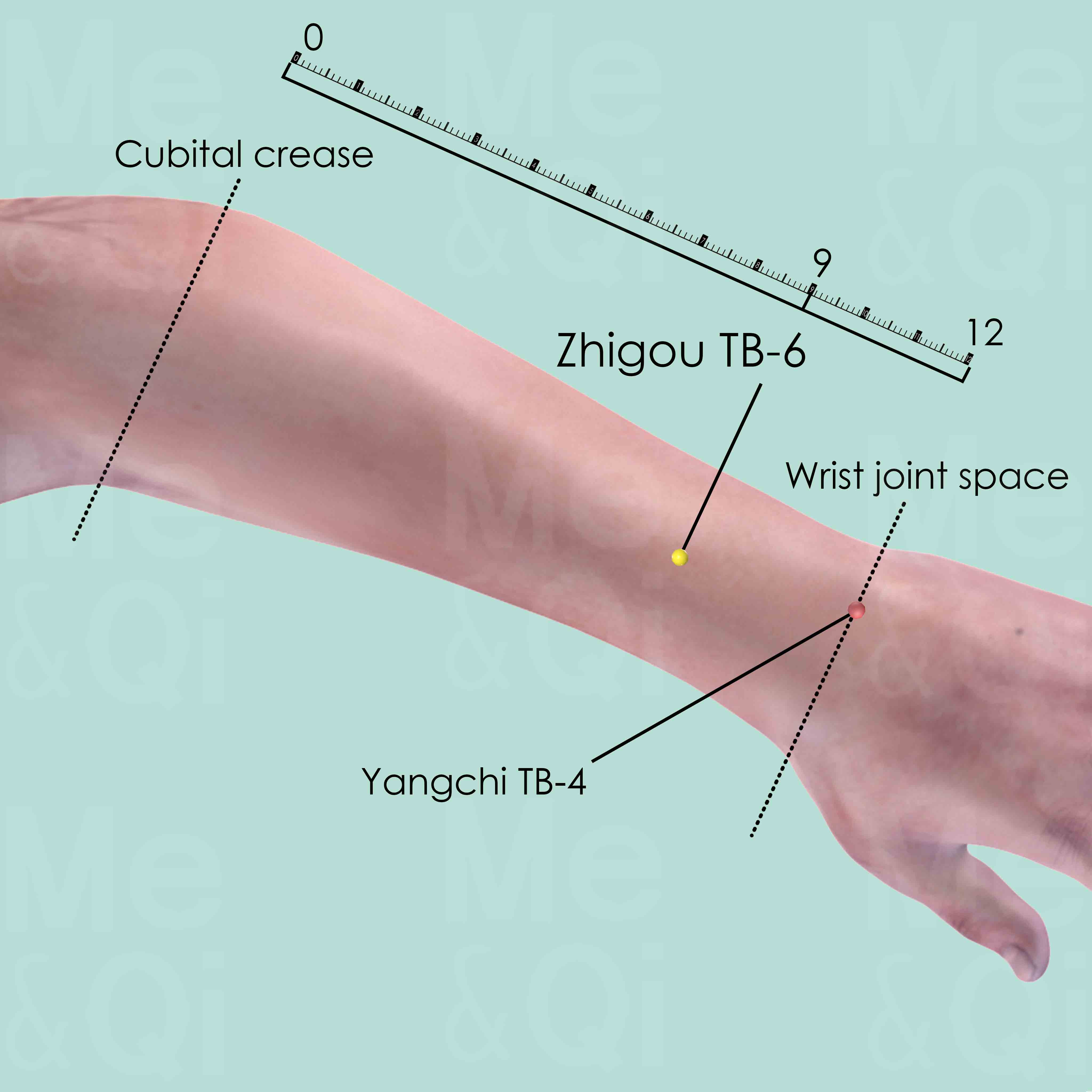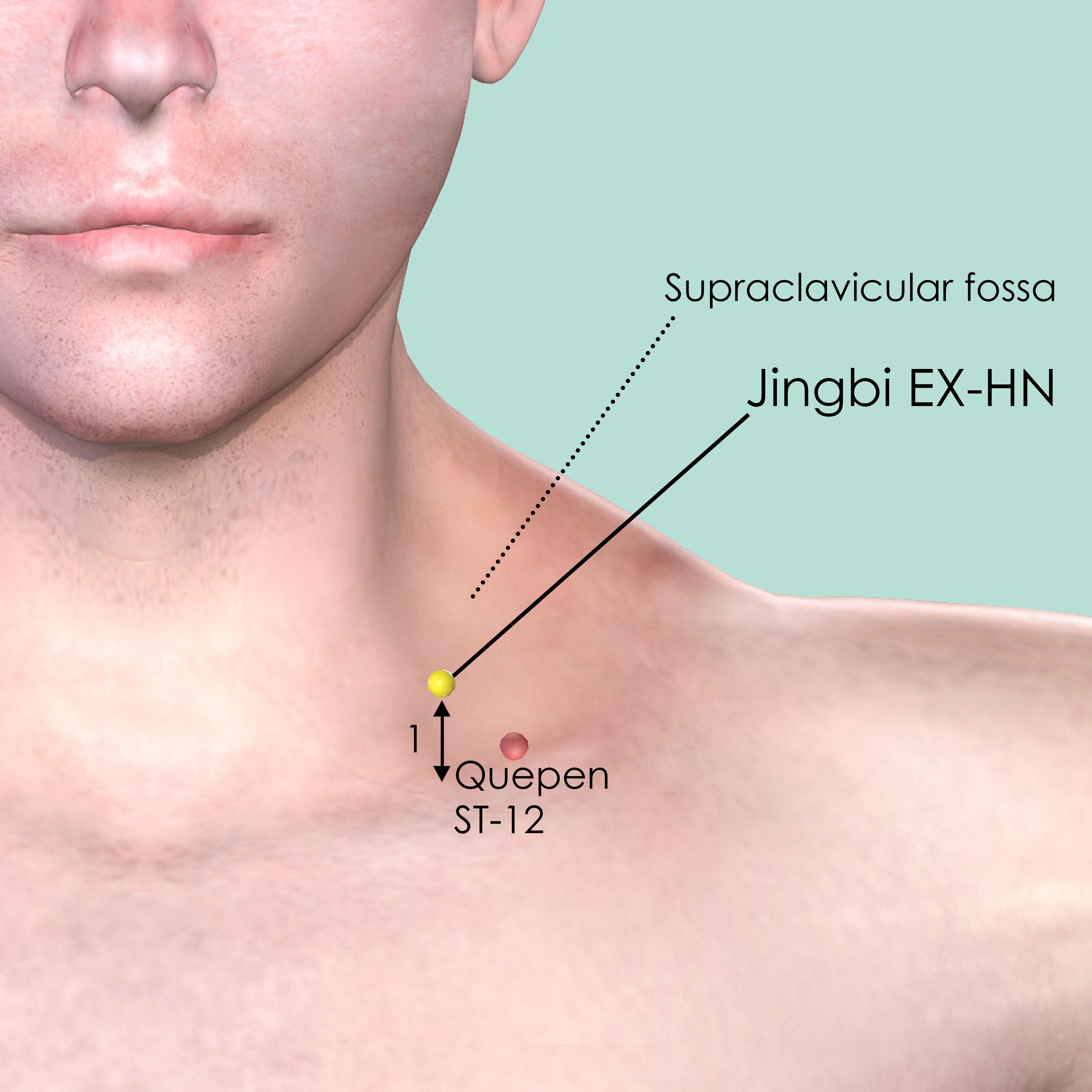Arm Paralysisaccording to TCM
Symptom families: Paralysis and Movement Neurological Disorders, Arms disorders and Symptoms
Parent symptom: Paralysis
What is Arm Paralysis?
Arm paralysis is the loss of muscle function in one or both arms, rendering an individual unable to voluntarily move their arm(s). This condition can occur due to various causes, including nerve injury, stroke, or musculoskeletal disorders. Arm paralysis can be partial or complete and may be accompanied by numbness or tingling, signifying underlying neurological issues. The impact of arm paralysis on daily life can be significant, affecting basic activities like dressing, eating, and personal care.
How does TCM view Arm Paralysis?
Traditional Chinese Medicine (TCM) sees arm paralysis as a symptom of underlying disharmonies in the body's energy pathways. TCM recognizes this condition as a blockage of Qi and Blood within the meridians that traverse the arm. Such blockages may stem from internal imbalances or external injuries.
TCM's approach to treatment involves identifying the specific pattern of disharmony, whether it be Qi Stagnation or Blood Stasis, and then using modalities like acupuncture, herbs, and exercises to restore the flow of Qi and regain mobility.
Acupoints for Arm Paralysis
TCM suggests specific acupoints for treating arm paralysis, each chosen for its ability to influence the flow of Qi and Blood in the affected area. Waiguan TB-5 is commonly selected for its capacity to expel Wind-Heat and remove channel obstructions, potentially restoring movement in cases of paralysis.
Zhigou TB-6 is another critical point, known for regulating Qi and addressing any Qi Stagnation. Meanwhile, Quze P-3 on the Pericardium Channel can invigorate Blood and Qi in the chest, which may indirectly benefit arm function, and Shousanli LI-10 on the Large Intestine Channel is believed to tonify Qi and help regulate the intestines, which can be essential for overall energy flow and limb function. These points are part of a larger strategy aimed at reactivating paralyzed limbs by harnessing the body's healing energy.
Explore below some acupoints used to address arm paralysis, organized by meridian.
- By Meridian
- Triple Burner Channel
- Extra Points: Head and Neck (EX-HN)
- Pericardium Channel
- Large Intestine Channel
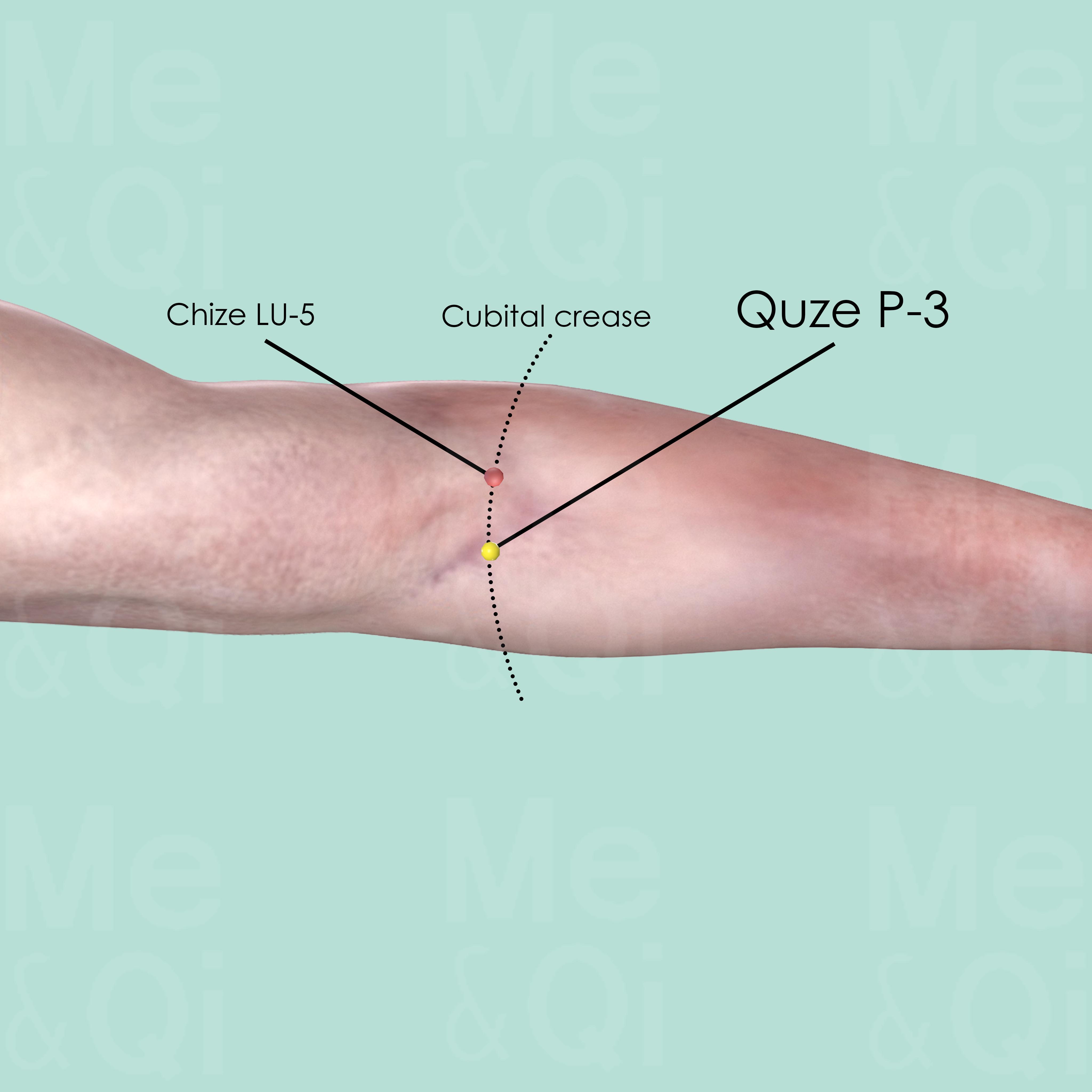
Quze P-3
On the transverse cubital crease, at the ulnar side of the tendon of biceps brachii muscle.
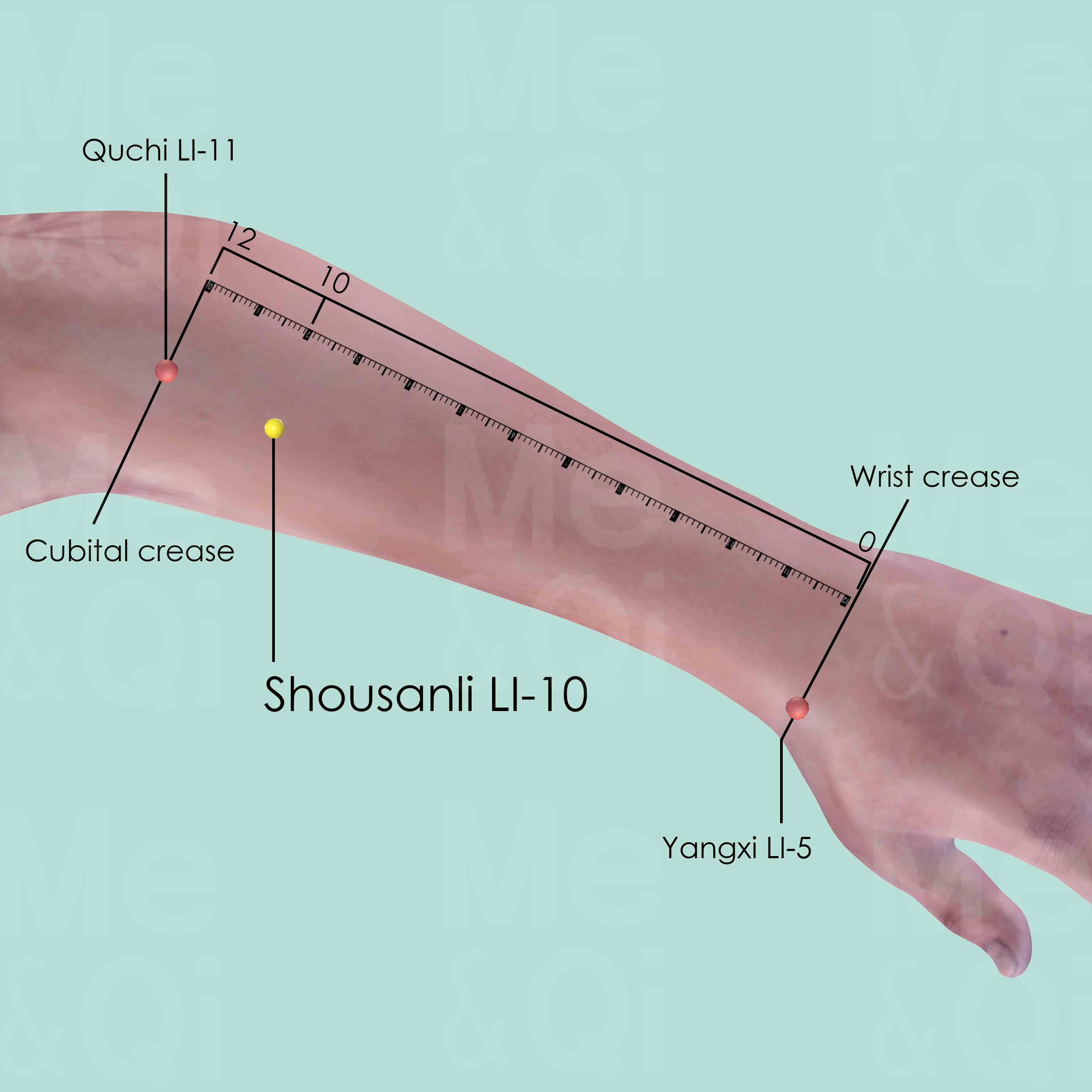
Shousanli LI-10
When a fist is made, with the ulnar side downward and elbow flexed, the point is 2 cun distal to Quchi LI-11 of the line joining Yangxi LI-5 and Quchi LI-11.

